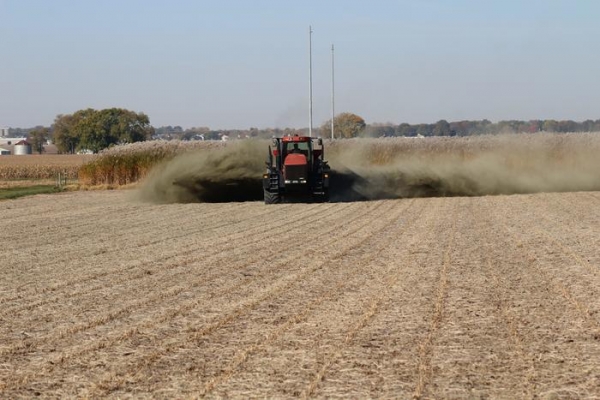Applying ground-up silicate rock to Midwestern farm fields can capture significant amounts of carbon dioxide and prevent it from accumulating in the atmosphere, according to a new study that successfully quantified those climate benefits for the first time.
Applying ground-up silicate rock to Midwestern farm fields can capture significant amounts of carbon dioxide and prevent it from accumulating in the atmosphere, according to a new study that successfully quantified those climate benefits for the first time.
Working with Eion Corp., researchers at the University of Illinois Urbana-Champaign and the Leverhulme Centre for Climate Change Mitigation (LC3M) developed a new method to calculate the CO2-reduction potential of basalt rock amendments applied to cropland soil, a process known as enhanced weathering.
Traditional row-crop agriculture releases sizable amounts of soil-derived carbon to the atmosphere as CO2, a greenhouse gas that is a primary driver of climate change. With enhanced weathering, silicate rock is applied to farmland to capture that carbon before it reaches the atmosphere. As the rock weathers, calcium and magnesium are released and react with dissolved CO2 to produce bicarbonate, essentially locking up the gas and redirecting it harmlessly into groundwater.
Read more at: University of Illinois Urbana-Champaign
Basalt is applied to fields at the University of Illinois Energy Farm as part of an enhanced weathering project. (Photo Credit: Institute for Sustainability, Energy, and Environment (iSEE))






